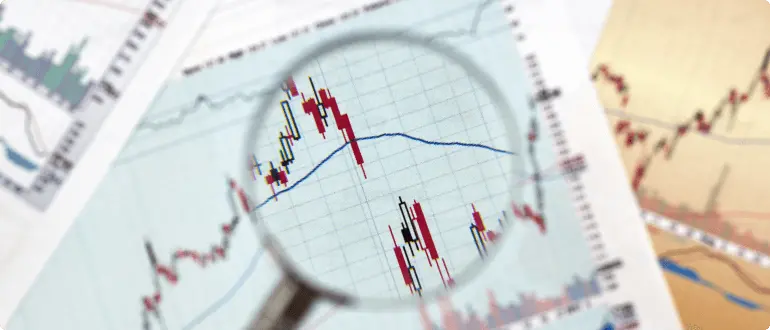Gap in forex: what is it, main types, how to trade on FxPro

Table of Contents
- What is a Gap in Forex?
- Types of Gaps
- Continuation Gap
- Breakaway Gap
- Exhaustion Gap
- Common Gap
- How to Trade gaps in Forex?
- How to minimise the risk?
Once you spend some time dabbling with Forex, you will notice that gapping in the market is quite common and you can easily recognise these occurrences on price charts. These gaps mostly appear when the opening and closing price of two (neighbouring) candles do not cross paths with each other. This forms a space on the chart. In this article, we will look at the various gap formations present in the Forex market and the different clues hiding within them.
What is a Gap in Forex?
Gaps appear on charts when a candlestick opening price moves upwards or downwards (sharply) from the closing prices of the previous bar. The movement happens in a way that prevents trading indicators from overlapping against each other.
Usually, candles of forex trading charts open from the same place where the previous candle left off. Once a candle period completes, it closes and makes way for a new one. The new one opens instantly after the last period ends.
The spot forex market is primarily liquid, especially during continuous trading hours. You can expect a price gap to take place between the market closing and the starting of the new trading week. This is referred to as a weekend gap.
A significant reason for gaps to take place once the weekend is over is because of political or economic events that happen while markets are not operating. This causes a demand and supply imbalance once the new week starts. Once the forex market reopens for the week, any noteworthy news events that happened during the weekend instantly impact prices. It causes Forex pairs to either gap down or up, depending on the specific impact.
Types of Gaps
While most forex gaps occur after the weekend, in some instances, they take place during the weekdays. Here are some common gap types that you may notice during the trading week:
Continuation Gap
Continuation gaps mostly occur during the middle of trends. During an uptrend, the upwards gap indicates that there is a continuation and that more buyers are entering the market to increase the price.
In most situations, a continuation gap is not big enough to be sustainable. Extreme price movements can easily indicate a change in the seller and buyer dynamic.
Breakaway Gap
In forex gap trading, traders use the term ‘breakaway gap’ to identify favourable price movements through support or resistance. Usually, people are often able to sight breakaway gaps once prices start moving out of specific trading ranges. They can also note them during a trend reversal.
Exhaustion Gap
In gap trading, the exhaustion gap mostly takes place in the middle of a trending period. This forex gap type is capable of signalling reversals. Usually, the price makes a final gap in the trend’s direction before reversing, which can be enough to signal exhaustion.
Gap trading experts advise everyone to be patient and wait for the candle to complete. Why? Because it confirms the direction change, which helps to prevent false signals.
Common Gap
Most people in the forex world consider this gap to be one of the least important forex gaps. The reason behind its name is that this gap can form on any occasion. Most traders utilise it for intra-day trading, especially if it is in the short term.
How to Trade gaps in Forex?
Some traders choose specific currencies to discover forex gaps and use them within their strategy. On the other hand, others avoid forex gap trading because they believe that the gaps in charts are rarely complete.
Just like every other type of trading, forex gap trading does not have a specific method to gain profits. The market is unpredictable, and changes constantly.
You should consider that the forex market operates throughout the working week. Most successful traders monitor these gaps between the opening value (Sundays) and closing value (Fridays). You may see forex market gaps appearing on charts in the form of large candles and can analyse the candles movements to determine whether your position is in an ideal direction.
How to minimise the risk?
Since the forex gap trading landscape is decentralised, the risk factor is higher in contrast to other forms of trading. Therefore, you should not start trading until you gain adequate knowledge about how gaps in forex work. You also need the patience to determine the right trading opportunities in the market. It would be best to do some demo trading before you move onto the real thing, to familiarise yourself with various trading scenarios that can help you out when you are trading live.
Certain currency pairs that are more likely to offer you price gaps. For instance, the Thai Baht does not have as much liquidity as the US Dollar or Euro, which means that there is a massive chance that it could feature forex gaps.
If you want to pick up trends in the market, exotic currencies could provide an opportunity, as these currencies lose their value quickly and the devaluation often gives birth to price gaps.




